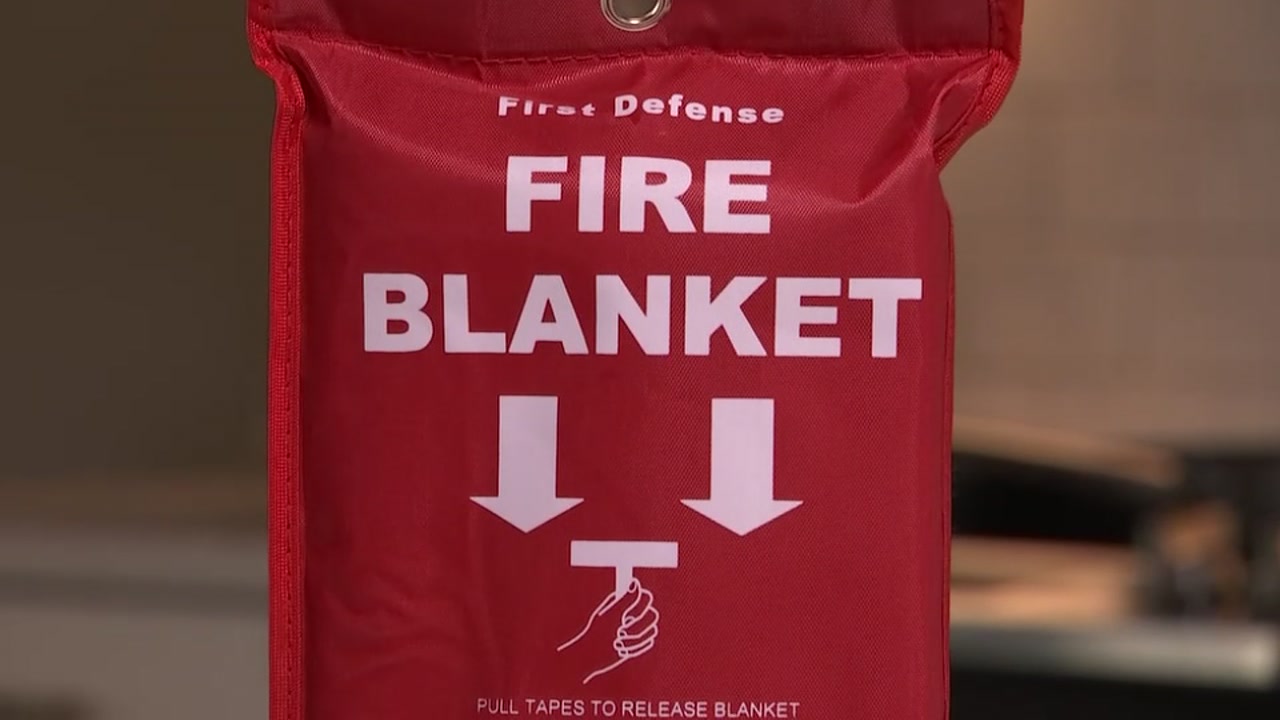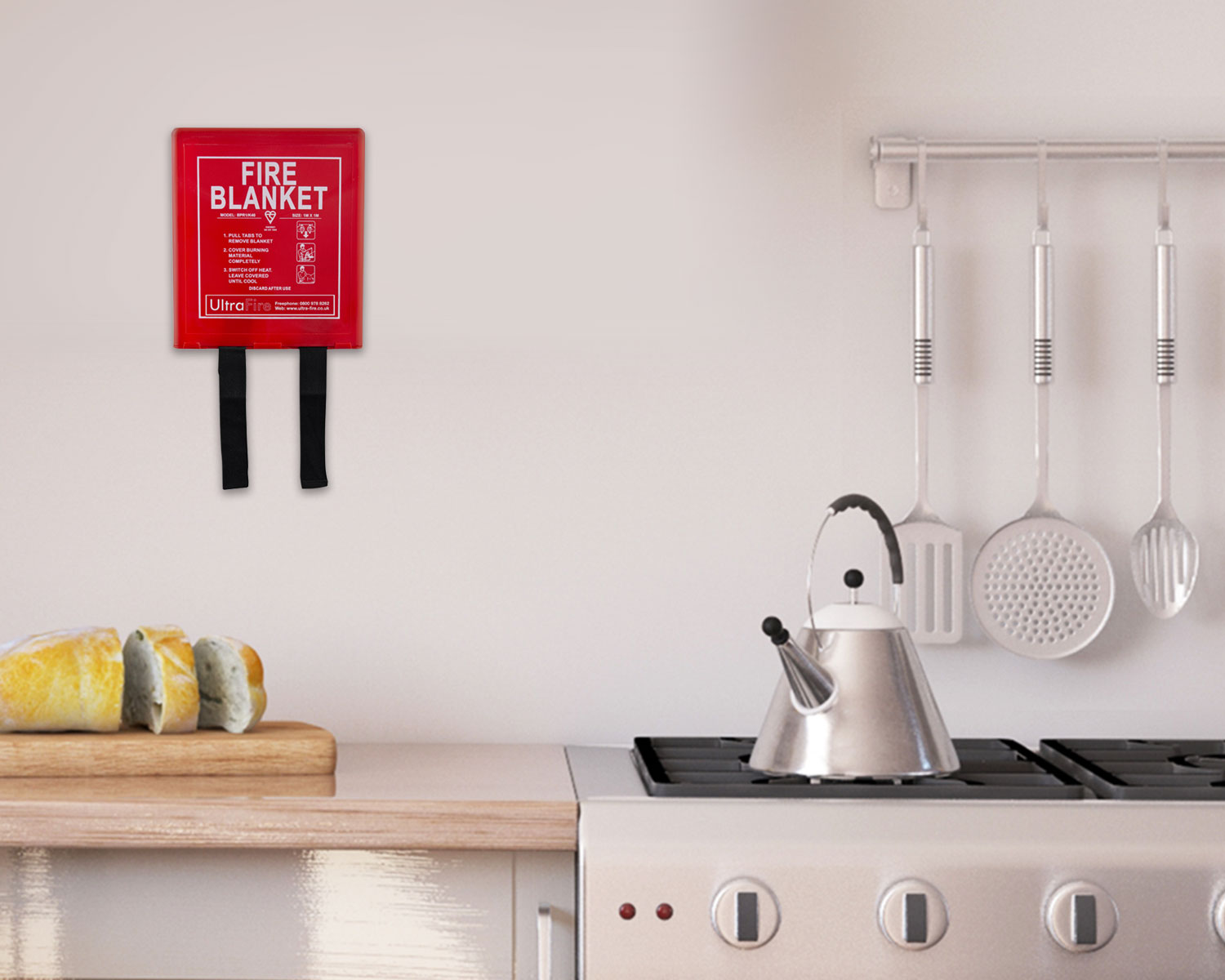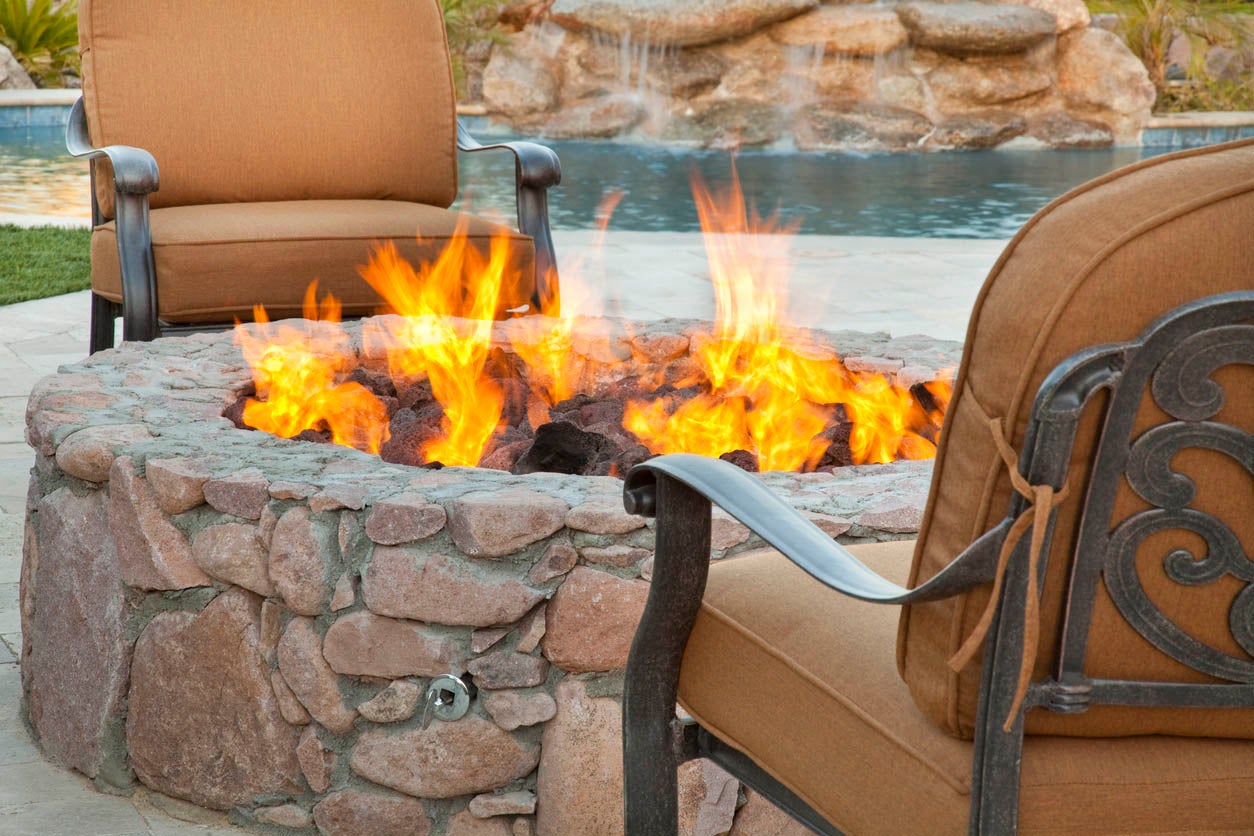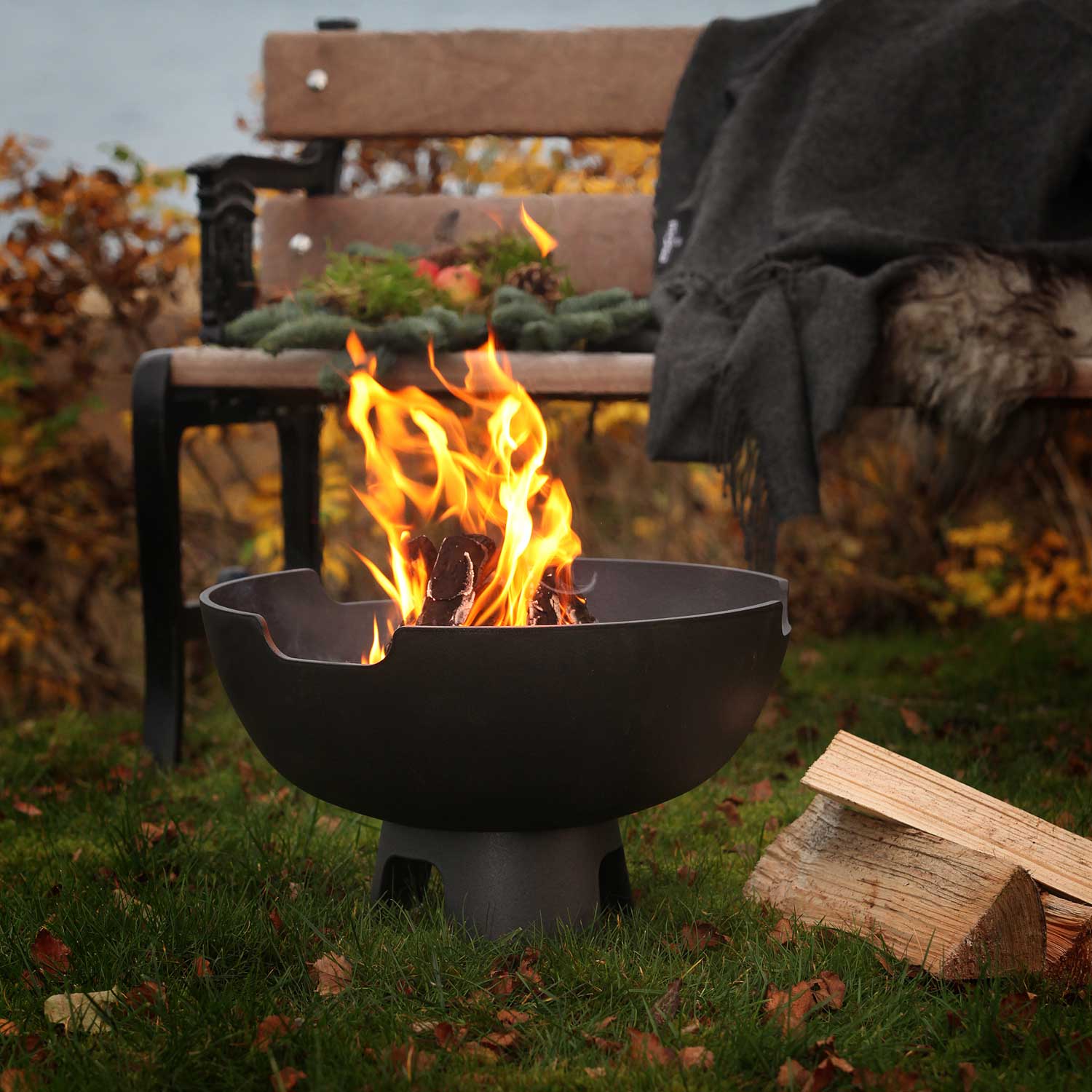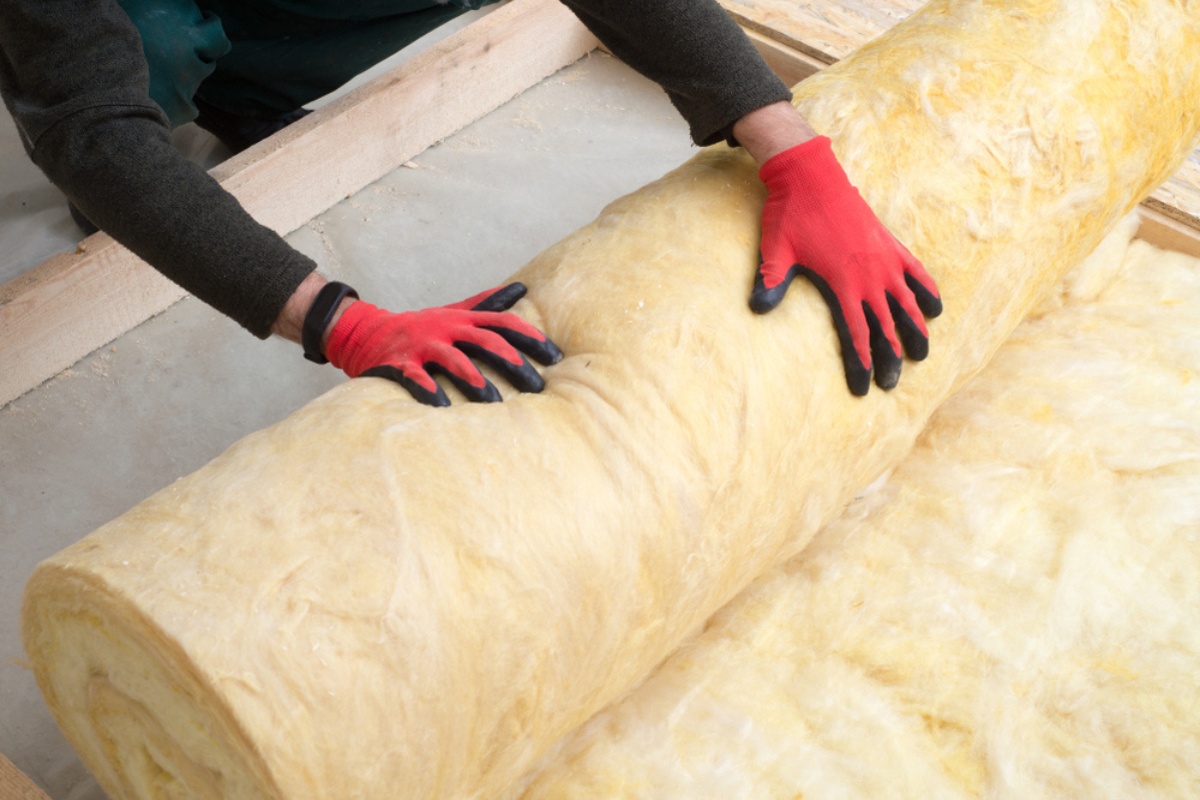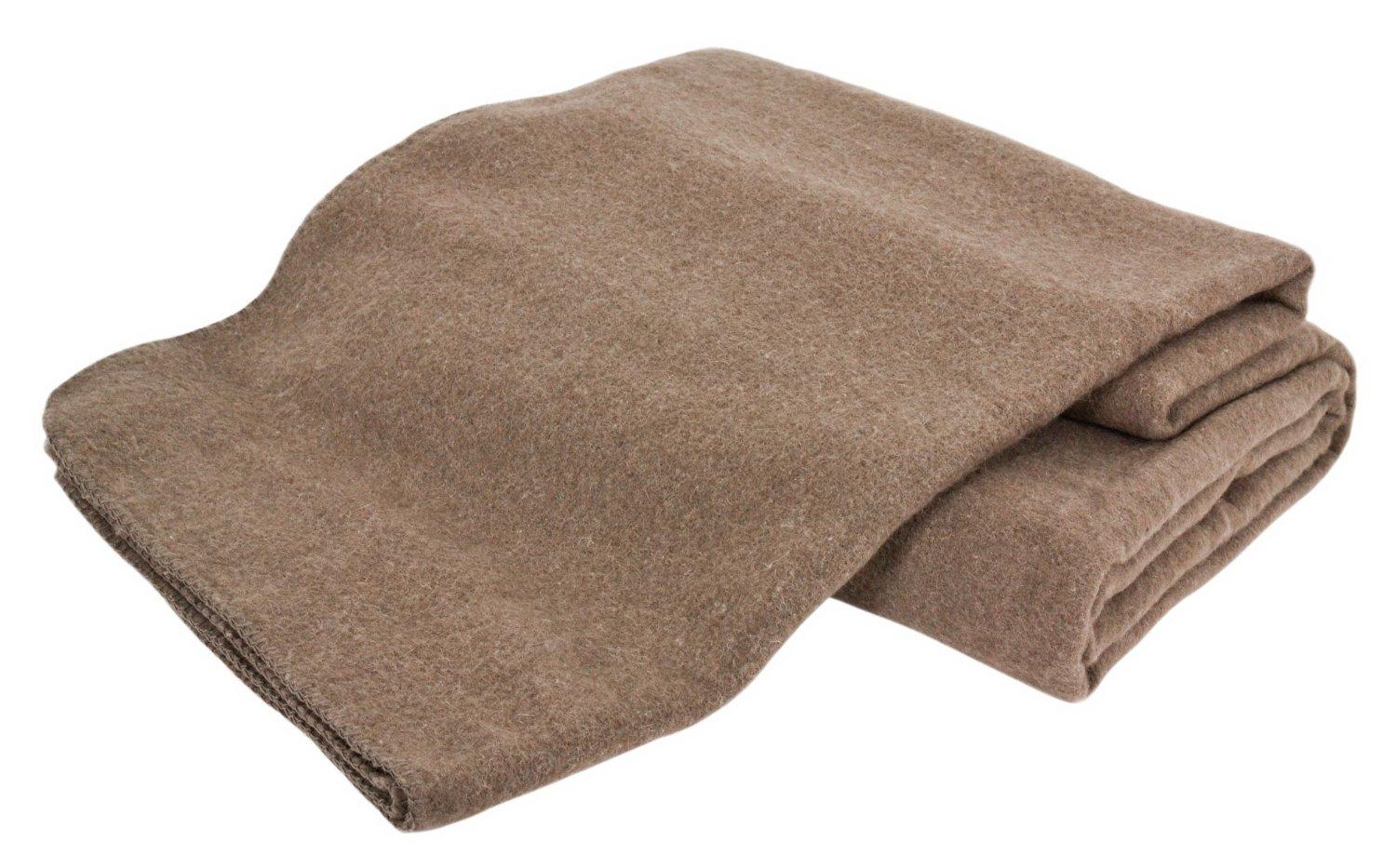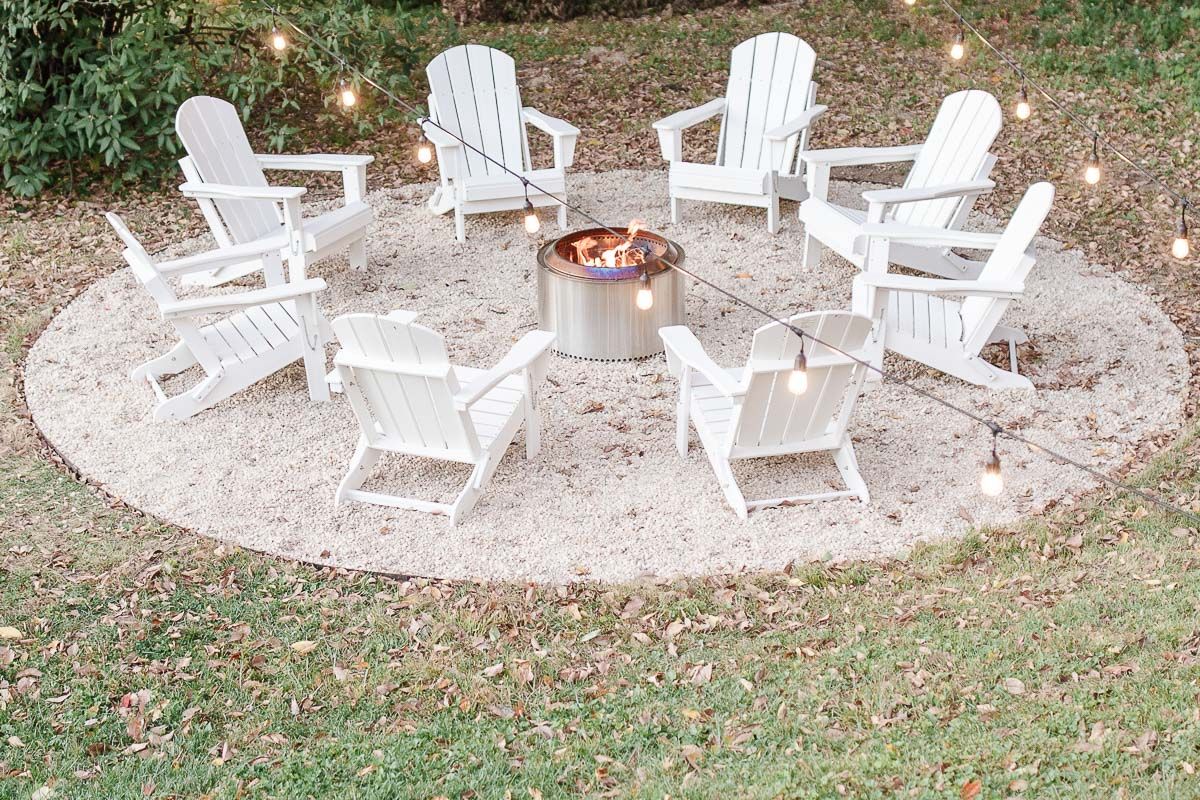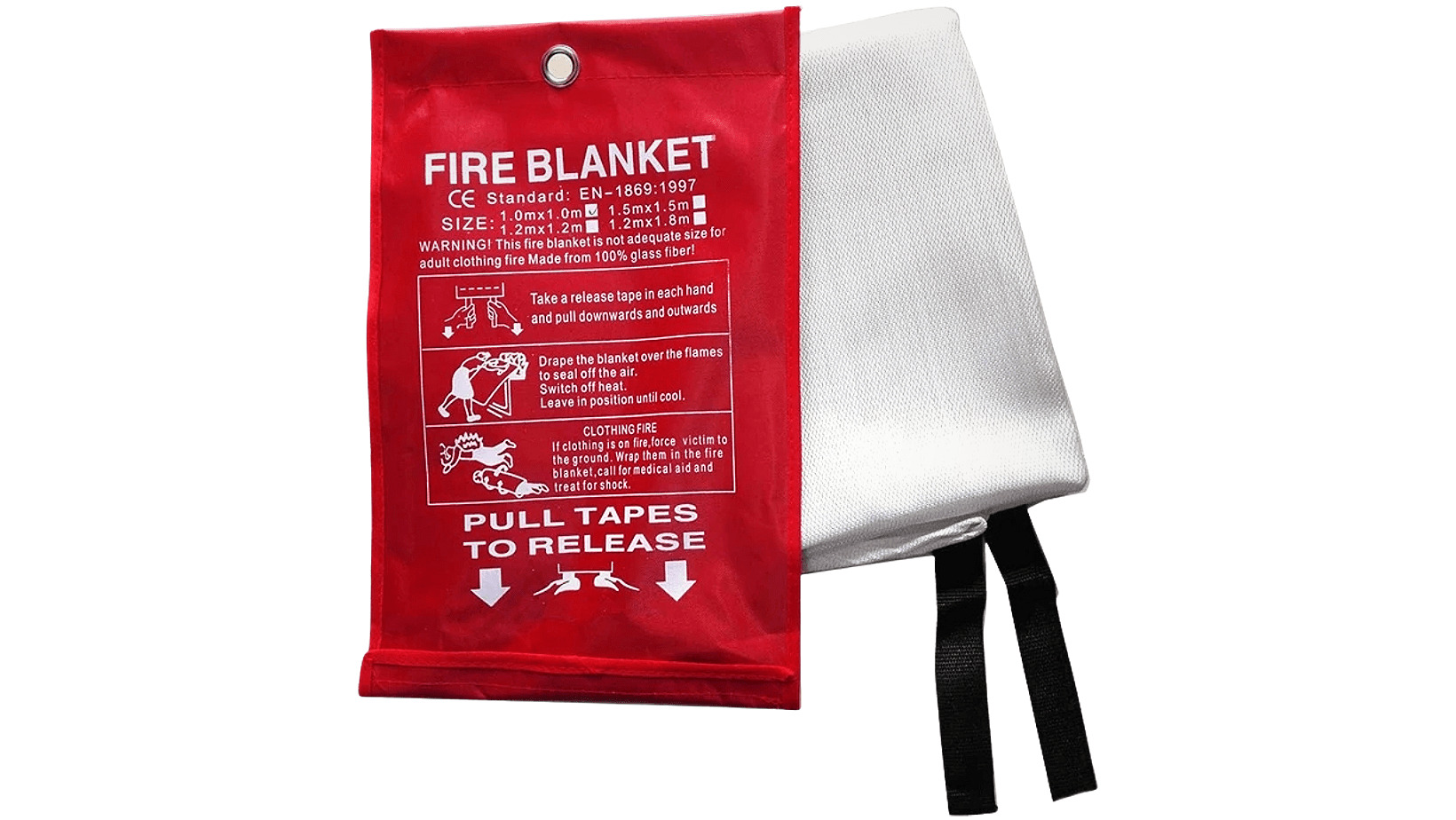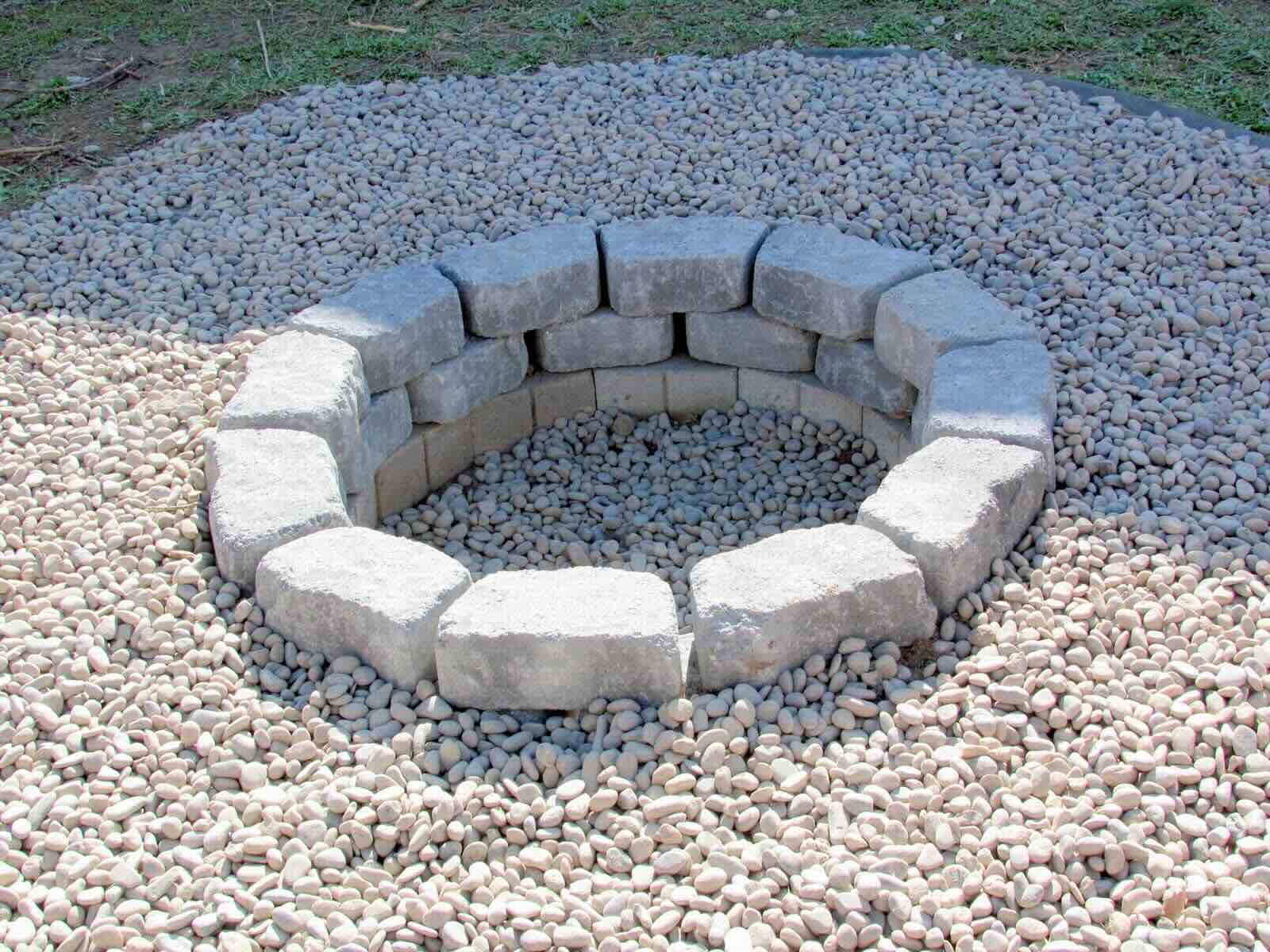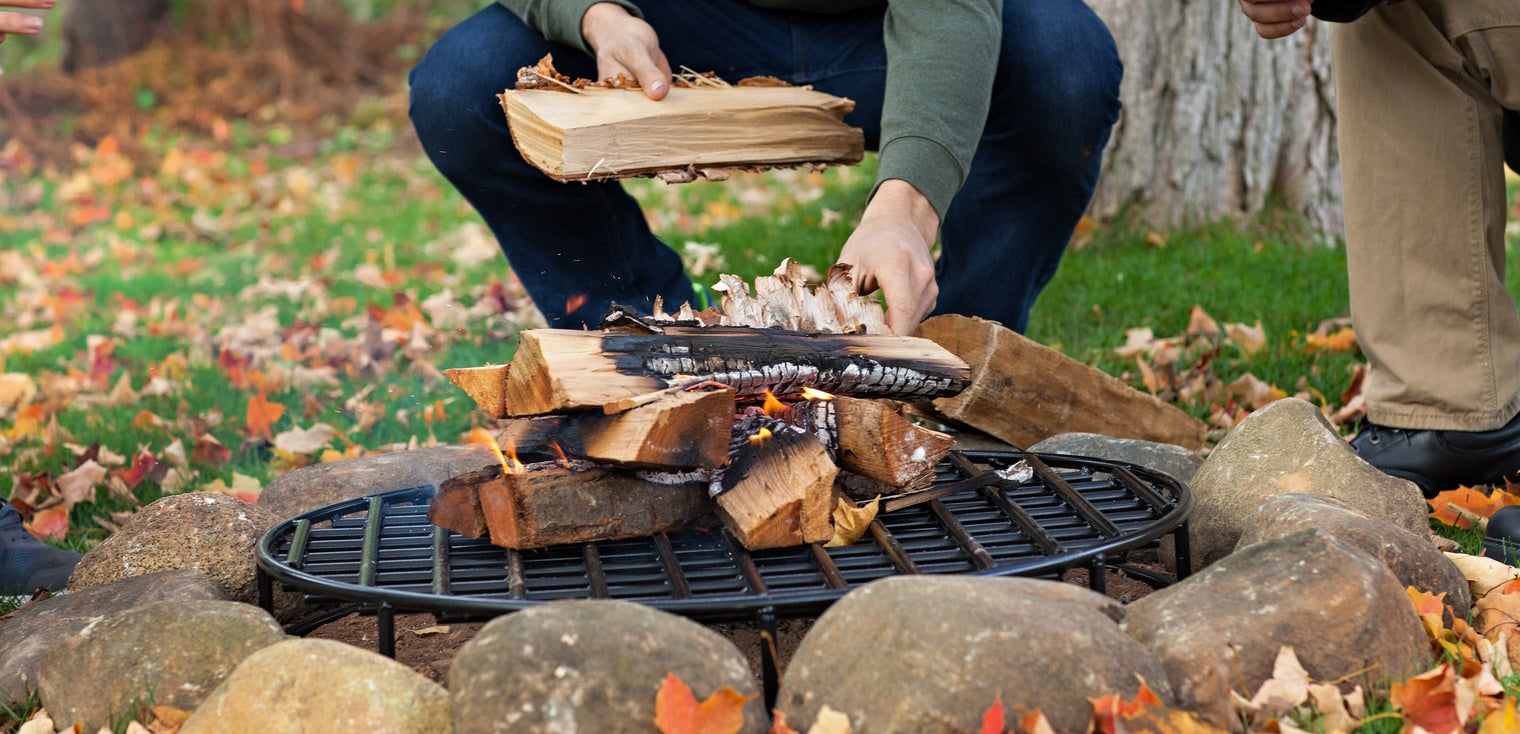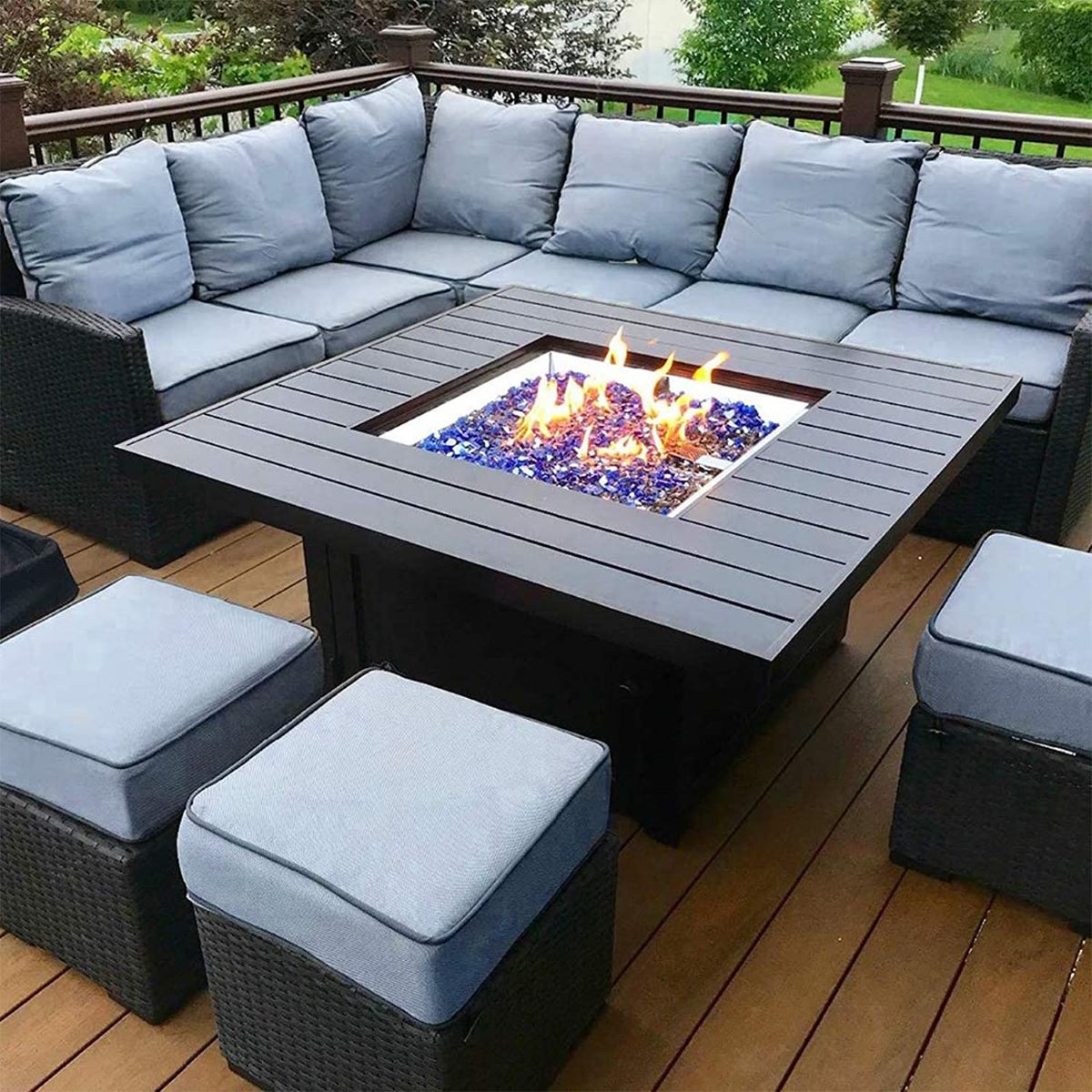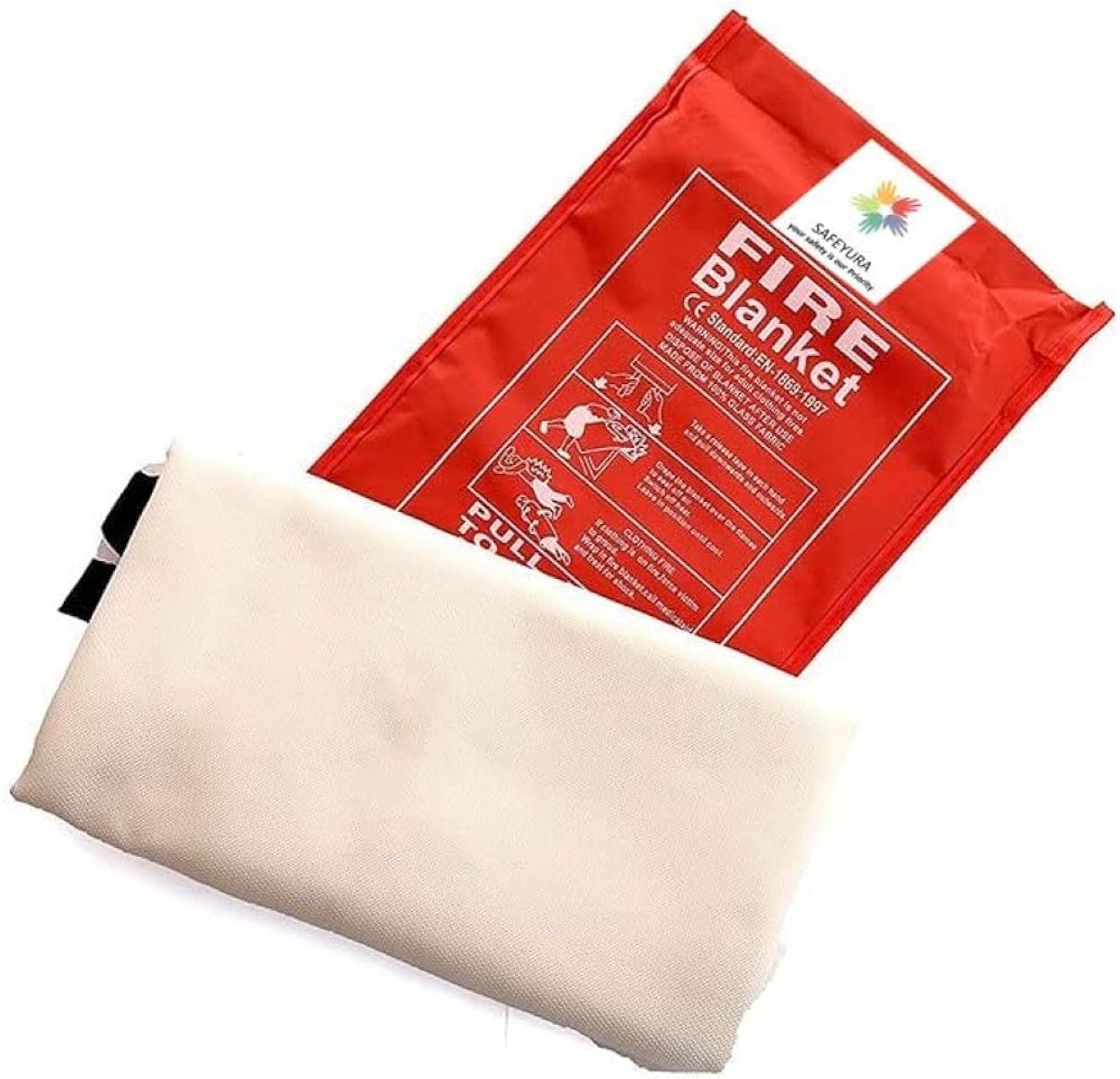

Articles
What Is A Fire Blanket Used For
Modified: March 2, 2024
Discover the various uses of fire blankets. From extinguishing small fires to protecting against burns, this article explores the importance and effectiveness of fire blankets.
(Many of the links in this article redirect to a specific reviewed product. Your purchase of these products through affiliate links helps to generate commission for Storables.com, at no extra cost. Learn more)
Introduction
A fire blanket is a versatile and essential safety tool used to extinguish small fires, prevent flames from spreading, and protect individuals from heat and burns. It is a highly effective and simple firefighting device that can be used in various settings, including homes, offices, workshops, and laboratories.
When a fire breaks out, time is of the essence, and having the right equipment can make a significant difference in controlling the situation. Fire blankets offer a quick and efficient method to smother flames and reduce the risk of injury and property damage.
In this article, we will explore the definition, functionality, types, uses, and maintenance of fire blankets. We will also discuss when and how to use a fire blanket effectively, ensuring the safety of both individuals and property.
Key Takeaways:
- Fire blankets are essential for smothering small fires, protecting against heat, and preventing flames from spreading. They are versatile, easy to use, and crucial for fire safety in homes, workplaces, and various environments.
- Proper care and maintenance of fire blankets are vital for ensuring their effectiveness. Regular inspection, storage, cleaning, and replacement according to manufacturer’s recommendations are essential to keep fire blankets ready for emergency use.
Read more: How To Use A Fire Blanket
Definition of a Fire Blanket
A fire blanket is a specially designed sheet made of fire-resistant materials that is used to extinguish small fires by smothering them. It is typically a rectangular piece of fabric woven from materials such as fiberglass or wool treated with fire-retardant substances.
Fire blankets are designed to be durable and capable of withstanding high temperatures. They are most commonly available in sizes ranging from 1 meter by 1 meter to 1.2 meters by 1.8 meters, although smaller and larger sizes can also be found.
When not in use, fire blankets are typically stored in a protective case or container, ensuring easy access when needed. The cases often come with clear usage instructions, making it easier for individuals to utilize them effectively during emergencies.
The main purpose of a fire blanket is to control small fires by smothering them. By covering the flames with the fire-resistant fabric, the blanket restricts the fire’s access to oxygen, effectively suffocating and extinguishing it.
In addition to suffocating the flames, fire blankets also provide a heat barrier, protecting individuals and nearby objects from the intense heat generated by the fire. This can help prevent burn injuries and limit the spread of the flames, giving individuals precious time to escape or control the situation.
It is important to note that fire blankets are designed for use on small fires, typically categorized as Class A, B, and C fires. These include fires involving materials such as paper, wood, fabric, flammable liquids, and electrical equipment with low voltage.
While fire blankets are effective in extinguishing small fires, they may not be suitable for larger or more complex fires. In these situations, it is critical to contact the appropriate emergency services and evacuate the area safely.
How Does a Fire Blanket Work?
A fire blanket works by smothering and suffocating a fire, effectively cutting off its oxygen supply and extinguishing the flames. The fire-resistant material of the blanket prevents the fire from spreading and protects individuals and nearby objects from heat and burns.
When a fire blanket is thrown or placed over a small fire, it acts as a physical barrier between the flames and the surrounding oxygen. This helps to significantly reduce the availability of oxygen necessary for the fire to sustain itself and grow.
The fire-resistant fabric of the blanket creates a cocoon-like environment, preventing the fire from receiving fresh air and causing it to diminish. By depriving the fire of oxygen, the blanket effectively smothers the flames, leading to their extinction.
In addition to depriving the fire of oxygen, fire blankets also provide a heat barrier. The thick, fire-resistant material of the blanket helps to insulate and protect individuals and nearby objects from the intense heat generated by the fire. This reduces the risk of burn injuries and limits the spread of the flames.
It is important to remember that fire blankets should be used as a first response to small fires and only when it is safe to do so. In case of larger or more complex fires, it is crucial to evacuate the area and contact emergency services.
Fire blankets are an effective tool for controlling fires in various scenarios, including kitchen fires, electrical fires, and fires involving flammable liquids. They provide a quick and efficient way to smother flames, giving individuals a vital opportunity to prevent the fire from escalating or causing further damage.
It is important to note that fire blankets should only be used on small fires that can be safely managed without endangering oneself. If there is any uncertainty about the size or nature of the fire, it is always safer to evacuate the area and seek professional assistance.
Types of Fire Blankets
Fire blankets come in a variety of types, each designed to meet specific fire safety needs. Here are some common types of fire blankets:
- Standard Fire Blanket: This is the most common type of fire blanket, made from fire-resistant materials such as fiberglass or wool. It is effective in extinguishing small fires and provides heat protection.
- High-Temperature Fire Blanket: This type of fire blanket is designed to withstand extremely high temperatures. It is suitable for use in environments where fires involving intense heat are more likely, such as welding or industrial settings.
- Electrically-Insulated Fire Blanket: As the name suggests, this type of fire blanket is specifically designed for electrical fires. It is made from non-conductive materials and can safely extinguish flames caused by electrical equipment.
- Chemical-Resistant Fire Blanket: Chemical fires require specialized fire blankets that can resist the corrosive effects of certain chemicals. These blankets are made from materials capable of withstanding chemical exposure while smothering the flames.
- Oil and Grease Fire Blanket: Fires involving cooking oils or greases require a fire blanket specifically designed to tackle these types of fires. These blankets are typically made from materials that are resistant to oil absorption and can effectively extinguish cooking-related fires.
- Fire Blanket for Specific Environments: Some fire blankets are tailor-made for particular environments or industries. This includes fire blankets for marine use, aviation applications, and laboratory settings. These blankets are designed to be efficient and suitable for the specific risks associated with each environment.
Before purchasing a fire blanket, it is important to consider the specific needs and potential fire hazards of your environment. It is recommended to choose a fire blanket that is appropriate for the types of fires that are likely to occur in your space.
Regardless of the type, fire blankets should adhere to relevant safety standards and certifications to ensure their effectiveness in extinguishing fires and protecting individuals from harm.
Uses of a Fire Blanket
Fire blankets have a wide range of uses and are an essential safety tool in various settings. Here are some common uses of a fire blanket:
- Home Fires: Fire blankets are invaluable in residential settings, where they can be used to quickly and safely control small fires, such as those caused by cooking accidents or electrical malfunctions. They can smother flames and prevent them from spreading, potentially saving lives and minimizing property damage.
- Kitchen Fires: Cooking is a common cause of household fires. Fire blankets are particularly useful in kitchen settings, where they can be immediately accessed to extinguish small cooking fires involving oils, grease, or other flammable materials.
- Workplace Fires: Fire blankets are essential in workplaces, including offices, workshops, factories, and laboratories. They can be used to suppress small fires caused by machinery malfunctions, electrical faults, or chemical incidents.
- Electrical Fires: Fires involving electrical equipment require specialized precautions. Fire blankets designed for electrical fires are non-conductive and can effectively extinguish flames caused by electrical shorts or malfunctioning equipment.
- Flammable Liquid Fires: Fire blankets are effective in smothering and controlling fires caused by flammable liquids. They can be used to quickly cover and extinguish flames from spills or accidents involving substances such as gasoline, oil, or solvents.
- Vehicle Fires: Fire blankets can be used in the event of a vehicle fire, particularly smaller fires that can be safely controlled. They can be stored in cars, trucks, RVs, or boats, providing a quick response to emergencies while waiting for professional assistance.
- Laboratory Fires: Fire blankets designed for laboratory use are chemically resistant and can safely extinguish fires caused by hazardous substances or experiments. They provide an additional layer of protection for laboratory staff and valuable equipment.
- First Aid: In addition to extinguishing fires, fire blankets can be used in first aid situations. They can be draped over a person’s body or wrapped around them to smother flames and prevent further injury in the event of a clothing fire.
It is important to remember that fire blankets should only be used on small fires that can be safely managed. For larger or more complex fires, it is crucial to evacuate the area and contact emergency services.
Having a fire blanket on hand and knowing how to use it properly can greatly improve your ability to respond to fire emergencies and protect yourself and others from harm.
A fire blanket is used to smother small fires by cutting off the fire’s oxygen supply. When using a fire blanket, always remember to carefully cover the flames and then leave the blanket in place until the fire has completely cooled down.
Read more: What Is A Fire Blanket?
When to Use a Fire Blanket
A fire blanket should be used in specific situations where it is safe to do so and can effectively control the fire. Here are some scenarios when a fire blanket can be used:
- Small Fires: Fire blankets are designed to extinguish small fires that are still manageable and have not spread extensively. They are effective in tackling fires involving materials such as paper, wood, fabric, flammable liquids, and electrical equipment with low voltage.
- Kitchen Fires: Cooking-related fires, such as those caused by oil or grease, can be effectively suppressed with a fire blanket. It is important to act quickly but safely to prevent the fire from spreading or causing further damage.
- Electrical Fires: If a fire breaks out due to an electrical malfunction or short circuit, a fire blanket designed for electrical fires can be used to extinguish the flames safely. It is important to ensure that the power source is turned off before attempting to use the fire blanket.
- Flammable Liquid Fires: Fires caused by flammable liquids, such as gasoline or oil spills, can be hazardous. A fire blanket can be used to smother the flames and prevent the fire from escalating. However, if the fire is large or spreading rapidly, it is crucial to evacuate the area and contact emergency services.
- Clothing Fires: In the event of a clothing fire, using a fire blanket is an effective way to extinguish the flames. The blanket should be wrapped around the person to smother the fire and prevent the flames from spreading further.
- Chemical Fires: Fire blankets specifically designed for chemical fires can be used to control and suppress fires involving hazardous substances. These blankets are resistant to chemicals and can safely smother the flames.
It is important to note that fire blankets should not be used in situations where it is unsafe to do so, such as large fires, fires involving highly volatile or explosive materials, or when there is a risk of personal injury. In these cases, it is crucial to evacuate the area and contact emergency services immediately.
Furthermore, fire blankets should only be used by individuals who have been trained in their proper usage and are familiar with the potential risks and limitations of using a fire blanket.
Remember, safety should always be the top priority, and professional help should be sought for larger or more serious fires.
How to Use a Fire Blanket
Knowing how to properly use a fire blanket is essential in effectively extinguishing small fires and ensuring personal safety. Here are the steps to follow when using a fire blanket:
- Assess the Situation: Before attempting to use a fire blanket, evaluate the size and severity of the fire. Ensure that it is safe to approach the fire and that the fire is still small and manageable. If the fire is spreading rapidly, it is important to evacuate the area and call emergency services immediately.
- Protect Yourself: Safety should be your top priority. Before approaching the fire, make sure to protect yourself by wearing heat-resistant gloves and, if possible, a protective mask or goggles to shield your face from heat and smoke.
- Remove the Fire Blanket: If the fire blanket is stored in a protective case or container, remove it from its packaging. Make sure to read and familiarize yourself with the instructions on the case, as they may provide specific guidelines for usage.
- Approach the Fire: Carefully approach the fire, ensuring that you have a clear and safe path. Remember to stay low to avoid inhaling smoke and to minimize exposure to heat.
- Cover the Fire: When you are close enough to the fire, hold the fire blanket by its handles or corners and gently shake it out to its full size. Slowly and carefully drape the blanket over the flames, ensuring that they are fully covered and no air can enter.
- Turn off the Heat Source: If the fire is caused by an electrical appliance, make sure to turn off the power source or unplug it before using the fire blanket. This will help prevent the fire from reigniting.
- Wait and Monitor: Hold the fire blanket in place for several minutes, even after the flames are extinguished. This allows the heat to dissipate and prevents any smoldering or reignition.
- Seek Professional Assistance: After using the fire blanket, it is important to contact emergency services to have the area inspected and to ensure that the fire has been fully extinguished. They can provide further guidance and determine if additional measures are needed.
Always remember that personal safety is paramount. If at any point you feel unsafe or the fire is too large or uncontrollable, evacuate the area immediately and call emergency services.
Regular practice and familiarity with using a fire blanket can help ensure a calm and effective response during a fire emergency.
Care and Maintenance of a Fire Blanket
Proper care and maintenance of a fire blanket are important to ensure its effectiveness and longevity. Here are some guidelines to follow when it comes to caring for and maintaining your fire blanket:
- Regular Inspection: Periodically inspect your fire blanket to ensure it is in good condition. Check for any signs of damage, such as tears, holes, or fraying. If any damage is detected, replace the fire blanket immediately.
- Storage: Store your fire blanket in a location that is easily accessible and free from obstructions. Keep it away from heat sources, flammable materials, and direct sunlight, as these can degrade the fire-resistant properties of the blanket. It is recommended to store the fire blanket in a protective case or container to prevent dust and debris from accumulating on it.
- Cleaning: If your fire blanket becomes soiled or contaminated, it is important to clean it appropriately. Follow the manufacturer’s instructions for cleaning, as different fire blanket materials may have specific cleaning requirements. Avoid using harsh chemicals or abrasive cleaners that may damage the fire-resistant properties of the blanket.
- Training and Familiarity: Ensure that individuals who may need to use the fire blanket are properly trained in its usage. Familiarize yourself with the instructions provided by the manufacturer and keep them easily accessible along with the fire blanket.
- Replacement: Fire blankets have a limited lifespan and should be replaced according to the manufacturer’s recommendations. Over time, the fire-resistant properties of the blanket may deteriorate, compromising its effectiveness. Regularly check the expiry date or recommended replacement timeline and replace the fire blanket accordingly.
- Testing: Some fire blankets have testing and certification requirements. It is important to check if the fire blanket meets relevant standards and certifications to ensure its reliability. Follow the testing guidelines provided by the manufacturer or consult with a professional to ensure your fire blanket is in good working condition.
By following these care and maintenance practices, you can ensure that your fire blanket is ready for use when needed. Regular inspections and proper storage will help keep the blanket in optimal condition, and diligent cleaning will remove any contaminants that may affect its performance. Remember to always adhere to the manufacturer’s guidelines and seek professional assistance if you have any concerns about the condition or effectiveness of your fire blanket.
Conclusion
A fire blanket is a vital safety tool that can protect individuals and property in the event of a small fire. It works by smothering flames and suffocating the fire, providing a quick and effective method of extinguishing fires before they escalate. Understanding the uses, types, and proper maintenance of fire blankets is essential for ensuring their effectiveness in emergency situations.
Fire blankets can be used in various settings, including homes, workplaces, kitchens, and laboratories. They are especially useful for tackling small fires caused by flammable liquids, cooking accidents, electrical malfunctions, or clothing fires. By quickly covering the flames and cutting off the fire’s oxygen supply, fire blankets can prevent the spread of the fire and help individuals gain control of the situation.
When using a fire blanket, it is crucial to assess the situation, protect yourself with appropriate safety gear, and follow the recommended steps for usage. It is important to remember that fire blankets are designed for small fires and may not be suitable for large or complex fires. In those cases, it is crucial to evacuate the area and contact emergency services immediately.
Caring for and maintaining your fire blanket is vital to ensure its reliability. Regular inspections, proper storage, and adherence to cleaning and testing guidelines will help keep your fire blanket in optimal condition. Replace your fire blanket according to manufacturer’s recommendations to ensure it maintains its fire-resistant properties.
In conclusion, a fire blanket is a versatile and valuable safety tool that can provide crucial protection during small fire emergencies. By understanding its uses, following proper usage guidelines, and maintaining it effectively, you can enhance your safety and the safety of others. Stay prepared, stay informed, and remember that fire safety is a shared responsibility.
Frequently Asked Questions about What Is A Fire Blanket Used For
Was this page helpful?
At Storables.com, we guarantee accurate and reliable information. Our content, validated by Expert Board Contributors, is crafted following stringent Editorial Policies. We're committed to providing you with well-researched, expert-backed insights for all your informational needs.

